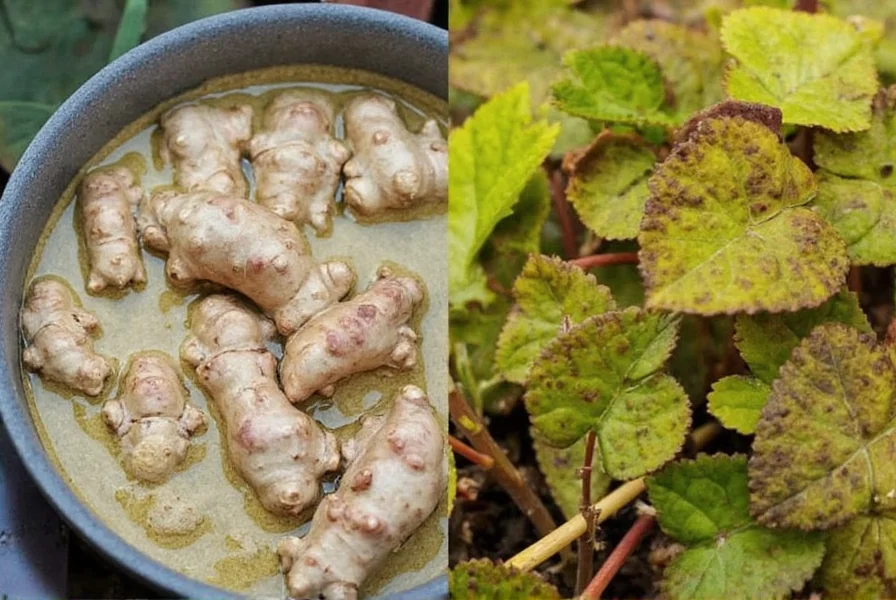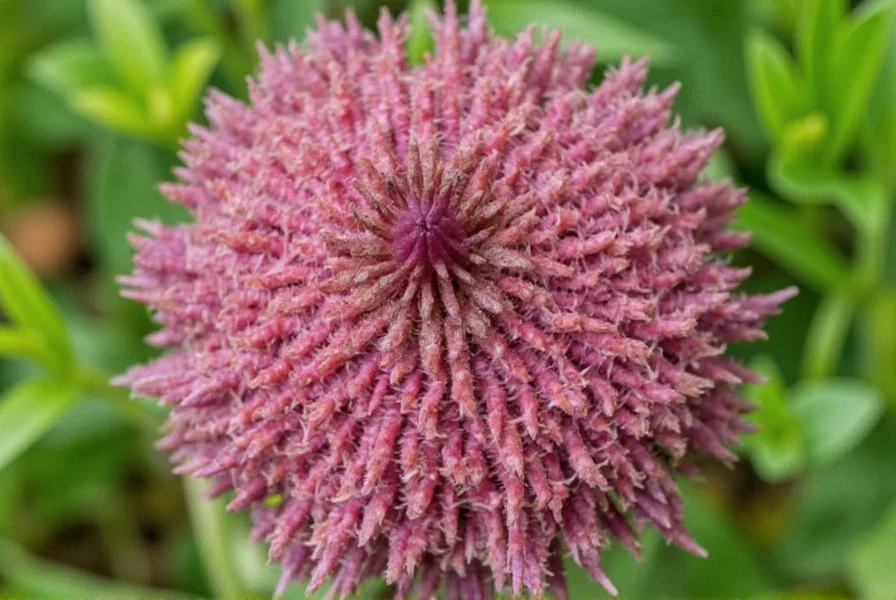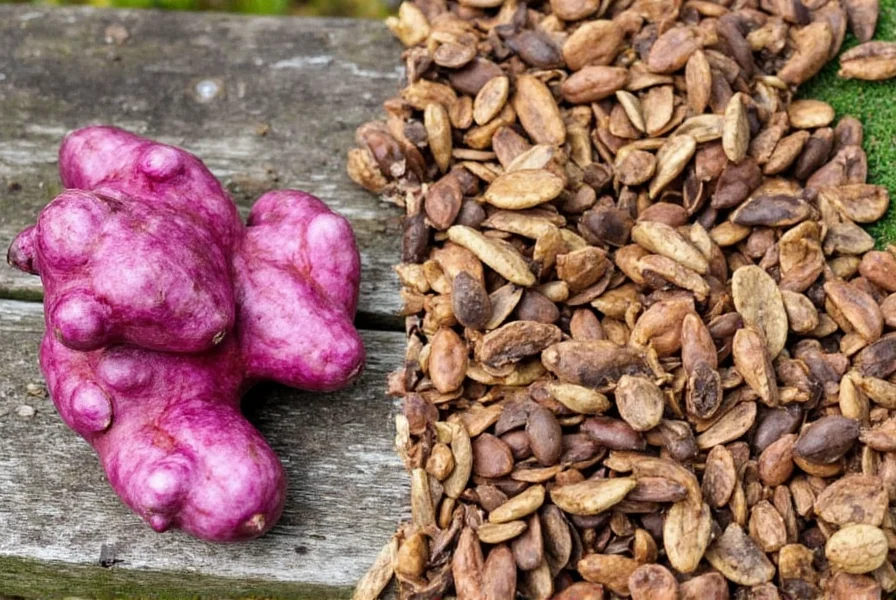When exploring mystic ginger plant characteristics, gardeners and culinary enthusiasts discover a versatile plant that bridges ornamental beauty with practical utility. This ginger cultivar has gained popularity among home growers seeking both aesthetic appeal and culinary ingredients in a single plant.
Botanical Background and Origin
Mystic ginger belongs to the Zingiberaceae family, sharing its species classification (Zingiber officinale) with common culinary ginger. The 'Mystic' designation identifies it as a specific cultivar selected for its unique visual traits rather than genetic modification. Originating from selective breeding within ginger-growing regions of Southeast Asia, this variety has adapted well to similar tropical and subtropical climates worldwide.
Unlike many specialty ginger varieties developed solely for ornamental purposes, Mystic ginger maintains the edible rhizome quality that makes ginger valuable in culinary and traditional applications. Its scientific classification remains Zingiber officinale 'Mystic', distinguishing it from related species like shell ginger (Alpinia zerumbet) or butterfly ginger (Hedychium coronarium).
Physical Characteristics and Identification
The most distinguishing feature of Mystic ginger is its dramatic purple pigmentation. While common ginger displays green stems and leaves, Mystic ginger exhibits:
- Purple-tinged leaf sheaths and stems
- Deep green leaves with subtle purple veining
- Rhizomes that may show slight purple hues when young
- Typical ginger flower structure, though less frequently produced
| Characteristic | Mystic Ginger | Common Ginger |
|---|---|---|
| Stem Color | Purple-tinged | Green |
| Leaf Color | Green with purple veining | Uniform green |
| Rhizome Flavor | Slightly more intense | Standard ginger flavor |
| Ornamental Value | High | Moderate |
These visual differences make ginger plant with purple stems varieties like Mystic particularly valuable in landscape design, where they provide striking contrast against predominantly green foliage.

Growing Requirements and Cultivation
For those interested in how to grow mystic ginger at home, this cultivar shares most requirements with common ginger but offers additional ornamental rewards. Successful cultivation depends on several key factors:
Climate Needs
Mystic ginger thrives in USDA hardiness zones 8-11, preferring temperatures between 70-85°F (21-29°C). While it can survive brief periods of cooler weather, prolonged exposure to temperatures below 50°F (10°C) will cause dormancy. Unlike some ginger varieties, it doesn't tolerate frost and requires protection in marginal climates.
Soil and Water Requirements
For optimal growth, provide:
- Well-draining, organically rich soil (pH 6.0-6.8)
- Consistent moisture without waterlogging
- Partial shade to filtered sunlight (3-6 hours of direct sun)
- Regular fertilization during growing season
One advantage of growing ornamental ginger varieties for gardens like Mystic is their relatively low maintenance once established. They require less attention than many flowering perennials while providing dramatic visual interest throughout the growing season.
Culinary and Practical Applications
Despite its ornamental focus, Mystic ginger remains fully functional for culinary purposes. When considering culinary uses of mystic ginger, note these important points:
- The rhizomes are edible and can substitute for common ginger in most recipes
- Some chefs report a slightly more intense flavor profile with subtle floral notes
- Younger rhizomes tend to be more tender and less fibrous
- Can be used fresh, dried, or preserved like standard ginger
When comparing mystic ginger vs common ginger in cooking applications, the differences are generally subtle enough that most home cooks won't notice significant variations in standard recipes. However, culinary specialists working with delicate flavor profiles might detect nuanced differences.

Common Misconceptions Addressed
The name 'Mystic ginger' has led to several misconceptions that deserve clarification:
- Mystical properties: Despite the name, this variety possesses no supernatural qualities. The 'mystic' designation refers solely to its striking visual appearance.
- Medicinal superiority: No scientific evidence suggests enhanced medicinal properties compared to common ginger.
- Rarity: While less common in commercial agriculture, it's readily available through specialty nurseries.
- Difficulty growing: It has similar cultivation requirements to common ginger, making it accessible to most home gardeners.
Understanding these facts helps gardeners make informed decisions about whether this variety suits their ginger cultivation requirements and expectations.
Practical Growing Tips for Home Gardeners
For successful mystic ginger cultivation, consider these practical recommendations:
- Planting time: Start rhizomes indoors 6-8 weeks before last frost or plant directly after soil warms to at least 60°F (15°C)
- Spacing: Allow 12-18 inches between plants for adequate air circulation
- Container growing: Use pots at least 12 inches deep with excellent drainage
- Harvest timing: Wait 8-10 months for full-sized rhizomes, though you can harvest smaller 'baby ginger' earlier
- Overwintering: In cooler climates, dig and store rhizomes in cool, dry conditions during winter
Many gardeners find that growing ginger varieties with distinctive visual characteristics like Mystic provides additional motivation to maintain their ginger patch, leading to more successful cultivation overall.
Conclusion
Mystic ginger offers an appealing combination of ornamental beauty and culinary utility that makes it valuable for both gardeners and cooks. Its distinctive purple-tinged appearance sets it apart from common ginger varieties while maintaining the edible rhizome quality that makes ginger so versatile. By understanding its specific growing requirements and realistic characteristics, gardeners can successfully incorporate this striking plant into their landscapes while enjoying its culinary benefits. Whether you're seeking ornamental ginger varieties for gardens or simply want to expand your home-grown spice collection, Mystic ginger represents an excellent choice that delivers on both visual drama and practical utility.
Is mystic ginger edible?
Yes, mystic ginger rhizomes are completely edible and can be used in the same ways as common ginger. The flavor profile is very similar, though some growers note a slightly more intense flavor with subtle floral notes compared to standard ginger varieties.
How does mystic ginger differ from common ginger?
The primary difference is visual: mystic ginger has distinctive purple-tinged stems and leaves with purple veining in the foliage, while common ginger displays uniform green coloring. The rhizomes may show slight purple hues when young. Flavor differences are subtle, with some reporting mystic ginger has a slightly more intense flavor profile.
Can I grow mystic ginger in a container?
Yes, mystic ginger grows well in containers. Use a pot at least 12 inches deep with excellent drainage, filled with rich, well-draining potting mix. Container growing allows you to move the plant to optimal light conditions and makes overwintering easier in cooler climates. Ensure the container has adequate drainage holes to prevent rhizome rot.
Does mystic ginger have special medicinal properties?
No, mystic ginger does not possess any special medicinal properties beyond those of common ginger (Zingiber officinale). The 'mystic' designation refers only to its visual appearance, not enhanced health benefits. Its medicinal properties are identical to regular ginger, including potential digestive and anti-inflammatory benefits.
How long does it take to harvest mystic ginger?
Mystic ginger typically requires 8-10 months of growth before producing full-sized rhizomes suitable for harvest. However, you can harvest smaller 'baby ginger' after about 4-5 months of growth. The plants will show yellowing leaves when the rhizomes are mature and ready for harvest.











 浙公网安备
33010002000092号
浙公网安备
33010002000092号 浙B2-20120091-4
浙B2-20120091-4